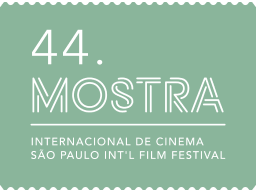Arquivo
Silent Shakespeare (0)

Sobre o filme
The attraction of cinema for William Shakespeare, the English Bard, dates from pioneer days in this media. Because, in the early years, at the turn of the century, films were seen as worldly entertainment, the film industry tried to imitate theater to raise the cultural status. To adapt Shakespeare to film, therefore, became one of the greatest challenges for filmmakers of the times; more so, because the films were silent and were no more than two reels long. The short films that make up this unique collection have been recovered from rare examples that survived time, copies in nitrate preserved by the British Film Institute?s National Film and Television Archive. Some of the copies are beautiful, detailed, colored by hand - evidence of the inventiveness of filmmakers of the times. In the words of director Martin Scorsese: "The British Film Institute is to be congratulated, for providing us with a rare opportunity to see these beautiful silent films that are today too fragile to be projected."
There are seven short films all told starting with King John (1899), by Englishman William-Kennedy Laurie Dickson, the first cinematographic adaptation of Shakespeare in history. To complete the selection: The Tempest (1908), also by English filmmaker Percy Stow, who succeeded in accurately translating the spirit of the text in just five minutes; A Midsummer’ Night Dream (1909) by Americans J. Stuart Blackton and Charles Kent, with impressive special effects in a production by Vitagraph, the most important company of the pre-Hollywood era; King Lear (1910), by Italian Gerolamo Lo Savio, with expressive coloring, painted directly on film, made in the Film d?Arte Italiana producers, specialized in filming theater plays with famous actors; Twelfth Night (1910), again with American Charles Kent, made by Vitagraph with one of the first film stars, Florence Turner, in the role of Viola; The Merchant of Venice (1910) the second of the Gerolamo Lo Savio series, which was not totally recoverable but that is opulent with real outdoor takes in Venice; and Richard III (1911) by Englishman F.R. Benson, presenting Sir Frank Benson?s renowned Shakespeare company and, literally, a record of the performance on stage. In the absence of words, an element of utmost importance in Shakespeare, these silent short films will be shown with music live. A new soundtrack with rich, onyric textures was written by pianist Laura Rossi who studied composition at the London College of Music. She performs with viola player Mike Outram and the Portinari Quartet. The string quartet is formed by musicians from the OSESP (the State of São Paulo Symphony Orchestra): Matthew Thorpe and Simona Cavuoto, violins, Peter Pas, viola, and Marialbi Trisolio, cello. The exhibit has a short interval preceding The Merchant of Venice.
Veja os horários no Programa de curtas - 1
Título original: Silent Shakespeare
Ano: 0
Duração: 88 minutos
País: England
Cor: Colorido, P&B
Direção: CHARLES KENTF. R. BENSONJ. STUART BLACKTONLAURIE DICKSONPERCY STOWWILLIAM KENNEDY

